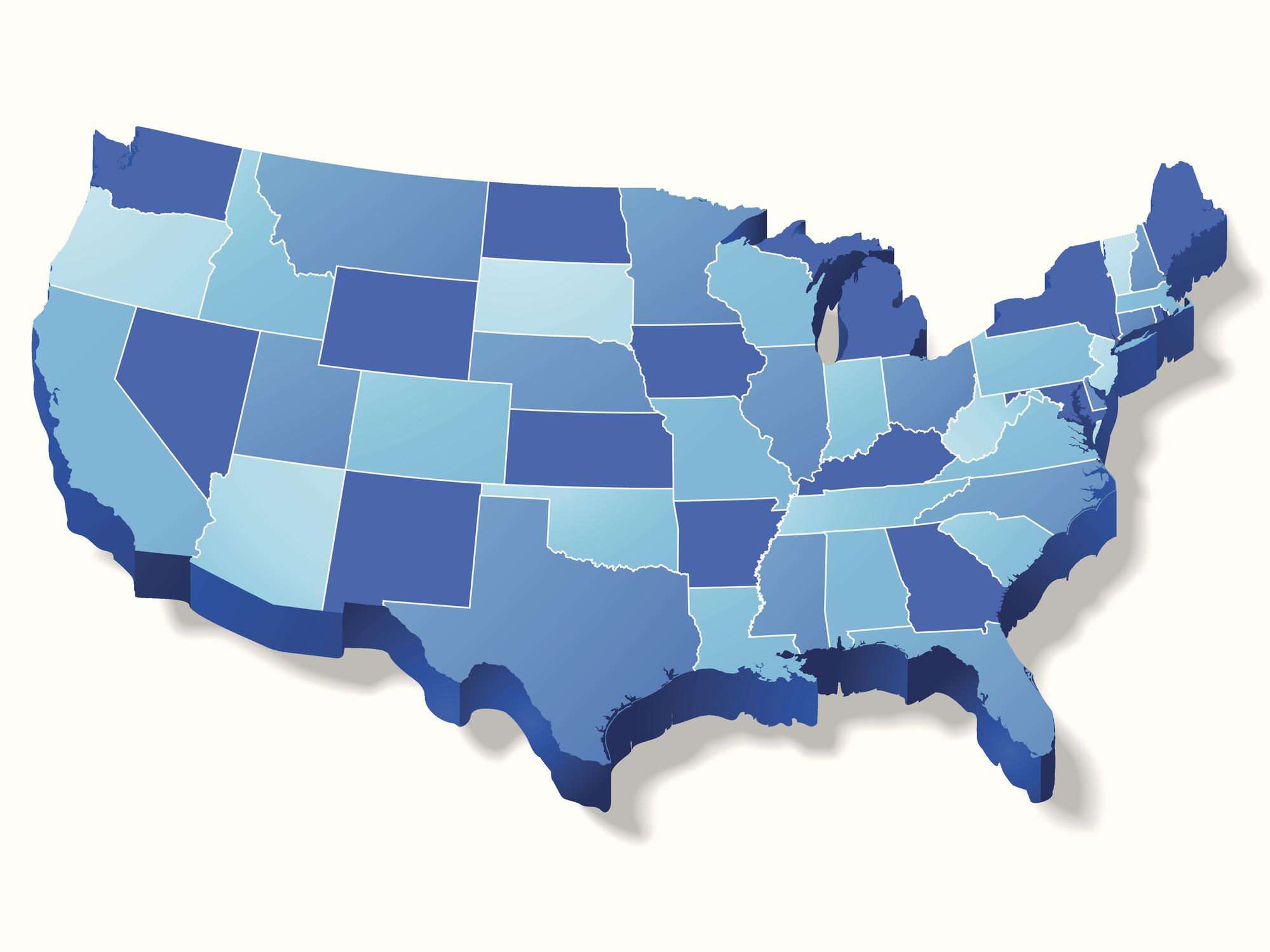
Fentanyl Test Strips
jurisdictions (45 states + D.C.) support access to fentanyl test strips (FTS) via jurisdiction-wide laws that do not subject the possession or use of FTS to drug paraphernalia penalties, as of December 2023.
What is drug checking, what are fentanyl test strips, and why are fentanyl test strips important?
Increasing concerns over fentanyl-related overdoses, as well as overdoses caused by other unknown adulterants within substances, alerted many policymakers to the concept of “drug checking.” Drug checking is the process of identifying, analyzing, or detecting the composition of drugs or adulterants within a sampled substance. [1]Jia Pu et al., Drug Checking Programs in the United States and Internationally: Environmental Scan Summary, Dep’t of Health & Hum. Services 1 (Sept. 17, 2021),
https://aspe.hhs.gov/reports/drug-checking-environmental-scan. An oft-publicized type of drug checking equipment is a fentanyl test strip (FTS), which discloses the presence, or absence, of fentanyl in a tested substance.
Fentanyl test strips are accurate, easy-to-use, and low cost
FTS are simple to use for harm reduction service workers or people who use drugs (PWUD). Results are available in a couple minutes and are highly accurate.[2] Traci C. Green, et al., An assessment of the limits of detection, sensitivity and specificity of three devices for public health-based drug checking of fentanyl in street-acquired samples, 77 Int’l J. of Drug Policy 77 (Mar. 2020),
https://doi.org/10.1016/j.drugpo.2020.102661. An individual FTS costs approximately one dollar. [3]Harm Reduction, BNTX, Inc.,
https://www.btnx.com/HarmReduction (last visited Sept. 29, 2023) (selecting the “Buy Now” option for FTS leads to a page where 10 FTS cost $10 and 100 FTS cost $75).
Low cost, ease of use, and utility both in and out of healthcare settings make FTS a useful tool—especially given PWUD’s reported reluctance to engage with harm reduction services at distribution sites of points of care due to a fear of legal repercussions and experiences of stigma. [4]Jacqueline E. Goldman, et al., Perspectives on rapid fentanyl test strips, 16 Harm Reduction J. (Jan. 8. 2019),
https://harmreductionjournal.biomedcentral.com/articles/10.1186/s12954-018-0276-0 In 2021, the Centers for Disease Control and Prevention and Substance Abuse and Mental Health Services Administration announced that federal funds may be used to purchase FTS. [5]Federal Grantees May Now Use Funds to Purchase Fentanyl Test Strips, Substance Abuse & Mental Health Servs. Admin. (April 7, 2021),
https://www.samhsa.gov/newsroom/press-announcements/202104070200; Federal Grantees May Now Use Funds to Purchase Fentanyl Test Strips, Centers for Disease Control & Prevention (April 7, 2021),
https://www.cdc.gov/media/releases/2021/p0407-Fentanyl-Test-Strips.html
Using fentanyl test strips is associated with safer or reduced drug use
Several studies demonstrate the effectiveness of FTS in promoting actual behavioral change through safer or reduced drug use. [6]Nicholas C. Peiper, et al., Fentanyl test strips as an opioid overdose prevention strategy: Findings from a syringe services program in the Southeastern United States. 63 Int’l J. of Drug Policy 122–128 (Jan. 2019),
https://doi.org/10.1016/j.drugpo.2018.08.007[7]Goldman, supra note 4.[8]Ju Nyeong Park, et al., Evaluation of fentanyl test strip distribution in two mid-Atlantic syringe services programs, 94 Int’l J. of Drug Policy (Aug. 2021),
https://pubmed.ncbi.nlm.nih.gov/33713964/ In one study, 43% of individuals reported safer drug use behavior following the use of FTS, with the odds of behavior change being five times more likely after receipt of a positive (for fentanyl) test result. [9]Peiper, supra note 6 A 2020 study showed similar results, with 26.5% of individuals receiving a positive FTS result abstaining from using the drug and 30.1% using a lower dose. [10] Hayoung Oh, et al., Fentanyl self-testing in a community-based sample of people who inject drugs, San Francisco, 82 Int’l J. of Drug Policy (Aug. 2020),
https://doi.org/10.1016/j.drugpo.2020.102787 Other examples of behavior changes include disposing of the fentanyl-positive drug, using it with other people around, having naloxone on hand, and taking a small (“tester”) dose of the drug to observe potency. [11]Goldman, supra note 4
Drug checking programs promote outreach and engagement
Drug checking programs successfully facilitate outreach to PWUD. [12]Pu, supra note 1. Through FTS distribution, community partners provide information and linkages to treatment services. Although there is a lack of research examining long-term recovery engagement outcomes associated with FTS programming, stakeholder attitudes surrounding the use of FTS programs for service referrals is positive. [13]Id.[14]Rebecca Olson, et al., Law Enforcement and Community Provision of Fentanyl Test Strips to People Who Use Drugs for Engagement and Referral to Service, 28 J. Pub. Health Mgmt. Practice S343 (Nov./Dec. 2022),
https://www.ncbi.nlm.nih.gov/pmc/articles/PMC9531966/pdf/jpump-28-s343.pdf. [15]Jennifer J. Carroll, et al., The Bronze Age of drug checking: barriers and facilitators to implementing advanced drug checking amidst police violence and COVID-19, 19 Harm Reduction J. (Feb. 4, 2022)
https://doi.org/10.1186/s12954-022-00590-z


